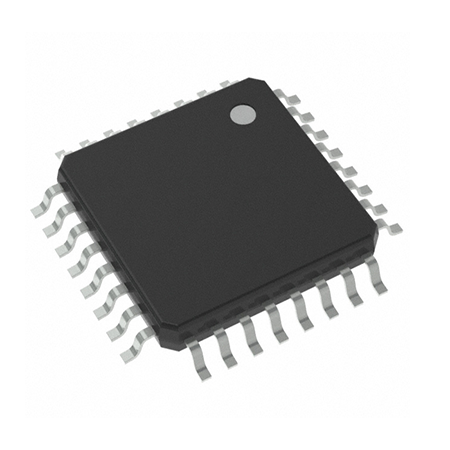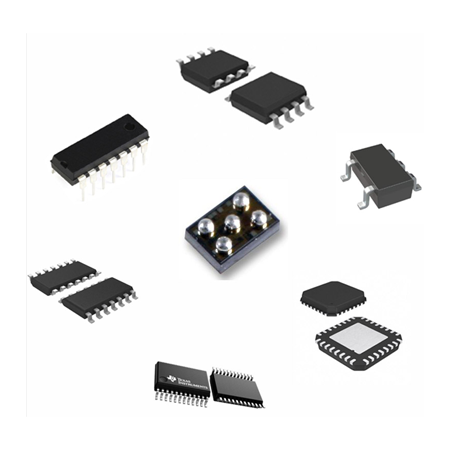The development process of the ATMEGA328P-AU microcontroller, like most integrated circuits, involves several stages from conception to production. Here's a simplified overview:
1. Conceptualization and Design:
Engineers and designers start by defining the specifications and features required for the microcontroller. This involves considering factors like processing speed, memory, peripherals, power consumption, and intended applications. Schematic designs and simulations are carried out using specialized software.
2. Architecture and Prototyping:
The microcontroller's architecture is established, detailing the arrangement of its components, including the CPU core, memory, I/O ports, and other peripherals. Prototyping and initial testing occur at this stage to validate the design's functionality.
3. Firmware Development:
Concurrently, firmware development begins. This involves creating the low-level software that will run on the microcontroller, including bootloaders, drivers, and basic functionalities.
4. Manufacturing and Fabrication:
Once the design is finalized, the microcontroller's blueprint is sent to semiconductor fabrication facilities. The actual production involves photolithography and etching processes to create the microscopic circuits on silicon wafers. These wafers go through numerous steps, including doping, layering, and metallization, to create the integrated circuits.
5. Testing and Validation:
After fabrication, the chips undergo rigorous testing to ensure they meet quality standards and functional requirements. This includes electrical testing, functional testing, and reliability testing to identify and rectify any defects.
6. Packaging:
The individual chips are packaged to protect them and provide a means of connecting to external devices. The ATMEGA328P-AU, for instance, is in a surface-mount package (the AU suffix indicates this package type).
7. Documentation and Release:
Comprehensive documentation, including datasheets, application notes, and programming guides, is created to aid engineers and developers in using the microcontroller effectively. Once all tests are passed and documentation is prepared, the microcontroller is released for mass production and distribution.
Throughout these stages, collaboration among hardware engineers, firmware developers, quality assurance teams, and manufacturing experts is crucial. Continuous iteration and improvement are common, aiming to enhance performance, reduce costs, and address any issues identified during testing.

The ATMEGA328P-AU microcontroller operates based on a fundamental architecture and set of functionalities that allow it to process data, interact with various devices, and execute programmed instructions. Here's a breakdown of its working theory:
1. Architecture:
CPU Core: The heart of the ATMEGA328P-AU is its 8-bit AVR CPU core, capable of executing instructions at a maximum frequency of 16 MHz.
Memory: It has 32KB of flash memory for program storage, 1KB of EEPROM for non-volatile data storage, and 2KB of SRAM for volatile data storage.
Peripherals: The microcontroller includes a variety of built-in peripherals such as timers/counters, GPIO (General Purpose Input/Output) pins, UART (Universal Asynchronous Receiver/Transmitter), SPI (Serial Peripheral Interface), I2C (Inter-Integrated Circuit), ADC (Analog-to-Digital Converter), and PWM (Pulse Width Modulation) controllers.
2. Execution Cycle:
Fetch: Instructions are fetched from program memory (flash) and loaded into the CPU.
Decode: The CPU interprets the fetched instruction and decodes it into control signals for execution.
Execute: The CPU performs the specified operation, manipulating data stored in registers or memory, interacting with peripherals, performing calculations, or controlling I/O operations.
3. Peripherals and I/O Operations:
GPIO: The GPIO pins allow digital input and output operations, enabling the microcontroller to interface with sensors, actuators, displays, and other external devices.
ADC: The ADC converts analog signals (from sensors, for instance) into digital data that the microcontroller can process.
Timers/Counters and PWM: These peripherals help manage timing-related tasks and generate precise pulse-width modulated signals for tasks like controlling motor speeds or LED brightness.
4. Programming and Control:
Programming: Developers write code in languages like C/C++ using development environments like the Arduino IDE or AVR-GCC. The code is compiled and uploaded to the microcontroller, specifying its behavior and operations.
Interrupts: The ATMEGA328P-AU can respond to external events through interrupts, temporarily suspending the main program to handle time-sensitive tasks or events.
5. Power Management:
The microcontroller is designed with power-saving features to optimize energy consumption, making it suitable for battery-powered devices and low-power applications.
6. Communication Protocols:
The microcontroller supports various communication protocols like UART, SPI, and I2C, allowing it to communicate with other devices or microcontrollers.
7. Execution Control:
Control structures, loops, and conditional statements in the code dictate the flow of execution, enabling the microcontroller to make decisions based on input conditions and perform specific actions accordingly.

Versatility and Flexibility
One of the main reasons for the ATMEGA328P-AU’s popularity is its versatility. It can be used in a wide array of applications, from simple LED blinking exercises to complex robotics projects. Its rich set of peripherals, including GPIO pins, timers/counters, analog-to-digital converters (ADCs), serial communication interfaces (UART, SPI, and I2C), and interrupt controllers, make it suitable for diverse projects.
Arduino Compatibility
The ATMEGA328P-AU is the brain of the Arduino Uno board, making it a household name among DIY enthusiasts and beginners entering the world of embedded systems. The ease of programming using the Arduino IDE and its extensive community support have contributed significantly to its widespread adoption.
Learning and Development
For newcomers in the world of microcontrollers and embedded systems, the ATMEGA328P-AU serves as an excellent starting point. Its straightforward architecture, well-documented datasheet, and plethora of online resources make it an ideal platform for learning and honing programming and hardware skills.
Applications in the Real World
Beyond the realm of hobbyist projects, the ATMEGA328P-AU finds applications in various real-world scenarios. It’s used in automation systems, IoT devices, data loggers, educational kits, and more. Its low power consumption also makes it suitable for battery-operated devices.
Future of the ATMEGA328P-AU
While the ATMEGA328P-AU has been around for some time, its relevance remains strong. However, with advancements in technology, newer microcontrollers with enhanced features, increased processing power, and better energy efficiency are continuously emerging. Yet, this stalwart microcontroller will likely remain a favorite due to its reliability, simplicity, and widespread support.
Conclusion
The ATMEGA328P-AU microcontroller has undoubtedly made its mark in the world of embedded systems. Its versatility, ease of use, and robustness have cemented its place as a favorite among beginners and seasoned engineers alike. Whether it’s powering your next DIY project or being part of a commercial product, its legacy continues to thrive.




 Need Help?
Need Help?







